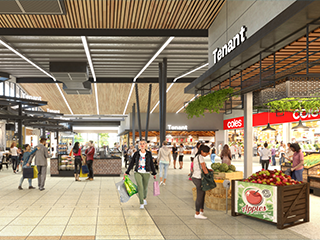
A developing foodie culture is bolstering the appeal of business opportunities in the nation’s regional centres, according to the latest reports from the Australian government.
In its Food Demand in Australia; trends and issues 2018 report, the government confirmed that investment value in community-based dining precincts had dramatically jumped, with ‘meals out and fast food’ equating to 34 per cent of total household food expenditure in 2015-16, up from just 15 per cent in 1988-89.
The upward trend follows a familiar pattern for regional and developing areas, which have benefitted greatly from increased local investment and low unemployment rates.
The rise in job security has translated to an increase in food retail spending, with data from the Australian Bureau of Statistics (ABS) revealing the average Australian household spends $104.38 per week on food and beverages consumed on premises.
Ryan Andersen, managing director of specialist property development advisors DMA Partners said the cultural shift towards destination-food outings, headlined by quality dine-in and entertainment offerings was driving customers back to suburban centres.
“Local centres are tuned in to this societal change and are leveraging off what they already have – great local market awareness, parking convenience and lower overheads – but they’re adding stylish, variety-filled dining precincts which appeal to the local audience and in particular, family diners,” Andersen said.
A rising dissatisfaction with metropolitan shopping centre landlords has also contributed to the regional growth, with Foodco managing director, Serge Infanti suggesting the oversaturation of food offerings in large shopping centres was an issue for the sector.
Speaking with Inside Franchise Business in November, Infanti said “One of the biggest challenges we see is the power imbalance with landlords, who are often increasing rents while footfall is stagnant, and more and more food outlets are added to shopping centres.”
As a result, Andersen said more food vendors and operators should be focusing on regional developments, where there is a still a hunger for high-quality offerings.
“The trend has been growing year on year and it’s in no small way due to the increased offering and quality of community-based neighbourhood and sub-regional centres,” Andersen said.
“The fact is that the evolution of shopping centre food offerings means access to premier culinary experiences is no longer reserved to patrons of supercentres such as Melbourne’s Chadstone or Brisbane’s Chermside.”
Andersen said the integration of food destinations such as Central Eats at the Yamanto Central development in Brisbane’s sub-regional district of Ipswich highlighted the importance of cultivating a vibrant food offering.
“Dining in or near a retail centre is no longer simply about grabbing a bite to eat,” Andersen said.
“It’s all about the experience. Can I park easily? Are there a range of choices on offer, not only of food variety but also in terms of restaurant style and location – alfresco, eat-at-the-bar, a la carte? When you add this consumption growth to the key decision drivers of accessibility, proximity and awareness, it’s not hard to see why sub-regional community shopping and dining hubs are really coming in to their own.”

